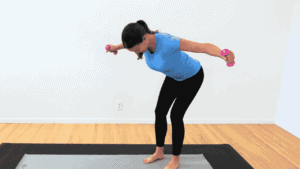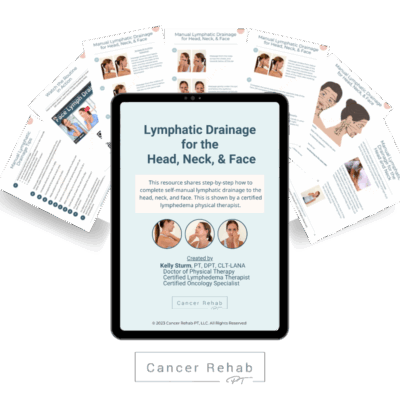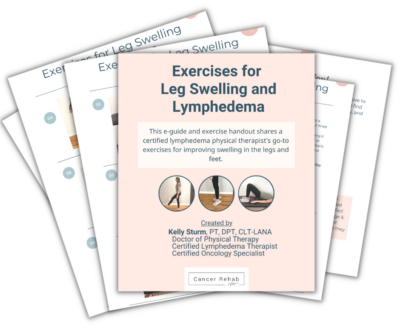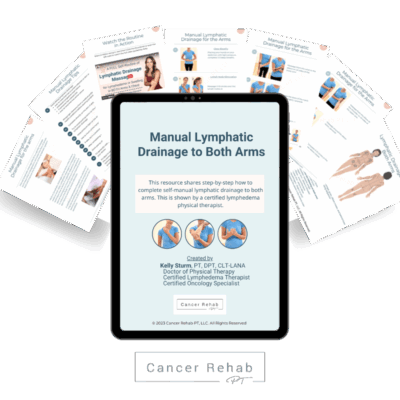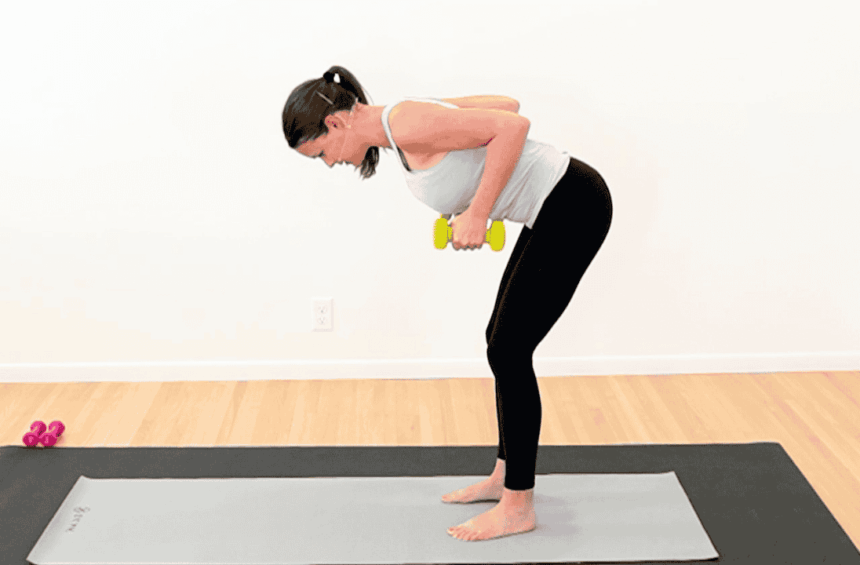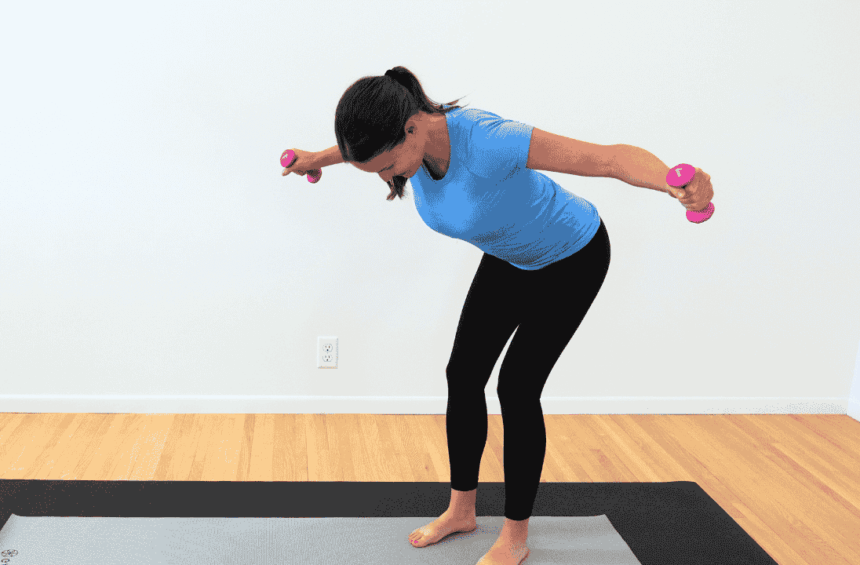Manual lymphatic drainage massage helps reduce swelling. It’s often used to treat medical conditions such as lymphedema and chronic venous insufficiency, but some people also use it to reduce puffiness and for general health purposes.
But are there any lymphatic massage dangers?
The risks are minimal for most people, but you should avoid lymphatic drainage massage if you have blood clots, active infections, heart disease, kidney failure, or several other conditions. Here’s everything you need to know to stay safe.
What Is Lymphatic Drainage Massage?
Lymphatic drainage massage, also known as manual lymphatic drainage, is a gentle, specialized technique that uses light pressure and rhythmic movements to stimulate your lymphatic system.
Your lymphatic system is your body’s drainage network. It helps remove waste, toxins, and excess lymph fluid from your tissues. During a lymphatic massage, specific hand movements encourage lymph fluid to flow toward your lymph nodes, where it gets filtered and processed.
The touch is much lighter than traditional massage because many of your lymphatic vessels sit just beneath your skin’s surface.
Benefits of Lymphatic Drainage
Lymphatic drainage massage has both medical and aesthetic benefits. It helps reduce swelling, improve circulation, boost immune system function, and decrease pain and stiffness.
It’s often used to manage swelling when living with lymphedema, a chronic condition that affects hundreds of millions of people worldwide. It can also help with chronic venous insufficiency, fibromyalgia, and post-surgical recovery.
Lymphatic drainage massage could also be helpful for aesthetic reasons, such as reducing swelling on your face and under-eye bags. Research shows that it can also be beneficial after aesthetic procedures like injectables, dermal fillers, facelifts, and breast augmentation.
Lymphatic Massage Dangers: Is It Safe?
Lymphatic drainage massage is generally very safe for most people. However, if you have certain health conditions, you should avoid this treatment to prevent complications.
Congestive Heart Failure
If you have congestive heart failure, your heart already struggles to pump blood effectively throughout your body. Lymphatic massage increases the amount of fluid returning to your circulatory system, which can put additional strain on your already weakened heart.
That said, in my clinical experience, a person with congestive heart failure can sometimes benefit from having manual lymphatic drainage done by a certified lymphedema therapist.
We want to make sure the person is on medication and that their doctor clears them for any safety concerns. It’s also important to monitor for any adverse side effects, like shortness of breath, meaning there is potentially more fluid around the lungs or heart.
Active infections
Lymphatic massage stimulates circulation and lymph flow, which could potentially spread an active infection throughout your body more quickly.
Whether you have a skin infection, flu, fever, or any other type of active infection, it’s best to wait until you’ve fully recovered before getting a lymphatic massage.
Blood Clots & Deep Vein Thrombosis
Lymphatic massage can increase blood flow and circulation, which might cause a blood clot to break loose and travel to other parts of your body. This could lead to life-threatening complications like a pulmonary embolism (clot in your lungs) or stroke.
Deep vein thrombosis (DVT) is when a blood clot forms in a deep vein, usually in your legs. If you’ve been diagnosed with DVT or suspect you might have it, seek immediate medical attention and avoid any type of massage therapy until you’re cleared by your healthcare provider.
Cellulitis
Cellulitis is a serious bacterial skin infection that causes redness, swelling, and warmth in the affected area. It’s a common complication of lymphedema.
If you have any signs of cellulitis, you need immediate medical treatment. Once your infection is cleared, you can safely resume lymphatic massage.

Kidney Problems
Your kidneys help filter waste and excess fluid from your blood. If you have kidney disease or kidney failure, your body may not be able to process the additional fluid that lymphatic drainage techniques mobilize. This could lead to dangerous fluid retention and swelling.
Stroke
If you’ve recently had a stroke, your body is still healing, and your circulation may be compromised. The increased fluid movement from lymphatic massage could potentially affect your blood pressure or put strain on your recovering cardiovascular system.
If you have any doubts about whether lymphatic massage is safe for you, always consult with your healthcare provider first.
Lymphatic Massage Dangers Cancer
Lymphatic drainage massage can be beneficial after cancer treatment. It’s often recommended to help prevent or manage lymphedema, a chronic swelling that can develop after surgery or radiation therapy.
However, you should never perform lymphatic drainage massage directly over cancerous tissue or areas of skin that have been damaged by radiation therapy unless cleared by a doctor.
Although there are still unknowns with this process, there is concern that this could potentially stimulate blood and lymphatic flow to cancerous areas, increasing the risk of cancer cells spreading.
If you’re currently undergoing cancer treatment or have active cancer, your oncologist needs to clear you for lymphatic massage first. Once you’re in remission and your medical team approves, lymphatic massage can be helpful in recovery and long-term health maintenance.
In my clinical experience, there are times when the healthcare team feels the benefits of lymphatic drainage outweigh the risks.
It may be used to help decrease pain in severely swollen areas or lower the risk of infections. However, in these circumstances, manual lymphatic drainage must be done by a certified lymphedema therapist for safety.
What Are the Side Effects of Lymphatic Massage?
Most people feel great after a manual lymphatic drainage massage. However, some mild side effects can happen as your body processes the treatment, including:
- Headache
- Nausea
- Fatigue
- Increased urination
Some people get mild flu-like symptoms after they undergo lymphatic drainage massage, especially after their first few sessions. These side effects are temporary and usually go away pretty quickly.
Can You Do Lymphatic Drainage Wrong?
Yes, you can do lymph drainage massage incorrectly. One of the most common mistakes I see as a lymphatic specialist and a certified lymphedema therapist is using too much pressure.
Your lymphatic vessels often sit just beneath your skin’s surface, and they’re very delicate. When you apply too much pressure, you can collapse these tiny vessels and block lymphatic fluid flow. This defeats the purpose of the massage and can cause bruising or discomfort.
Also, with lymphatic drainage massage – especially facial lymphatic drainage – becoming popular in the beauty world, there are routines being shared on social media and beauty blogs that haven’t been vetted by certified professionals.
Some of these tutorials use incorrect massage techniques or suggest applying too much pressure or moving fluid in the wrong direction. Make sure you’re following trusted information from qualified practitioners, such as a trained massage therapist or a certified lymphedema therapist.
What Should I Avoid After Lymphatic Massage?
After lymphatic massage, your body needs time to process the treatment and flush out the extra fluid.
Some of my patients report feeling the fluid moving. This may make someone feel tired, needing to rest or take it easy for the remainder of the day. It’s rare, but on occasion, you may develop a light headache or feel foggy.
It’s important to listen to your body after lymphatic drainage.
Make sure to drink plenty of water throughout the day to help your body flush out the toxins and waste that were mobilized during your lymphatic massage.
FAQs
Who should not get a lymphatic massage?
People with certain health conditions should avoid lymphatic massage to prevent complications. This includes anyone with congestive heart failure, active infections, blood clots & deep vein thrombosis, cellulitis, kidney problems, or a recent stroke. If you have cancer, get clearance from your oncologist first, especially if you are still in active treatment.
Can you get a lymphatic drainage massage while pregnant?
Yes, lymphatic drainage massage is generally safe during pregnancy. Many pregnant women find it helpful for reducing swelling in their feet, hands, and face. However, always get approval from your doctor or midwife before getting any type of massage during pregnancy, especially if you have pregnancy complications or are considered high-risk.
Why do I feel ill after a lymphatic drainage massage?
Feeling slightly ill after a lymphatic massage can be normal. When the massage mobilizes stagnant lymph fluid and toxins, your body needs to process and eliminate them, which can sometimes make people feel tired, nauseous, or achy. If you feel severely ill or symptoms last more than a day, contact your healthcare provider.
Can you overdo lymphatic drainage?
The most common way to overdo lymphatic drainage massage is to apply too much pressure. Your lymphatic vessels are delicate and sit just under your skin’s surface. When you use too much pressure, you can block the lymph flow or add inflammation to the area. Adding inflammation from deeper pressure can cause more lymphatic fluid and blood to flow to the area, having the opposite effect.
How do toxins leave the body after lymphatic massage?
After lymphatic massage mobilizes toxins and waste products, your body eliminates them through a few different pathways. Most toxins are filtered through your liver and kidneys, then eliminated through urine and bowel movements. Some toxins also leave through your lungs when you breathe and through your skin when you sweat.
This is why you might notice increased urination after a session and why drinking water is so important. It helps your kidneys flush out the waste better.
How to Do Lymphatic Drainage Massage Safely
Manual lymphatic drainage is a gentle form of massage that can help with inflammation and fluid retention. It’s often used to treat lymphedema and other chronic conditions that cause swelling, as well as for general health purposes.
Lymphatic drainage massage is safe for most people, but it’s important to follow guidance from qualified professionals like a certified lymphedema therapist or a trained massage therapist. Avoid applying too much pressure and make sure you’re moving fluid in the correct direction.
You can do lymphatic drainage massage at home, as long as you follow reputable tutorials. As a lymphatic specialist and a certified lymphedema therapist, I’ve created step-by-step lymph drainage guides you can find in my Shop.
If you’re living with lymphedema and chronic swelling, you can find more support in Lower Body Lymphedema Rehab and Breast Cancer Rehab.


